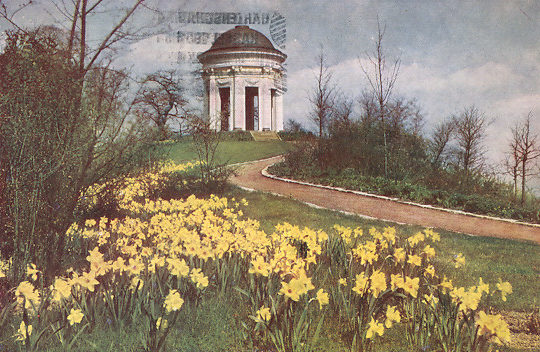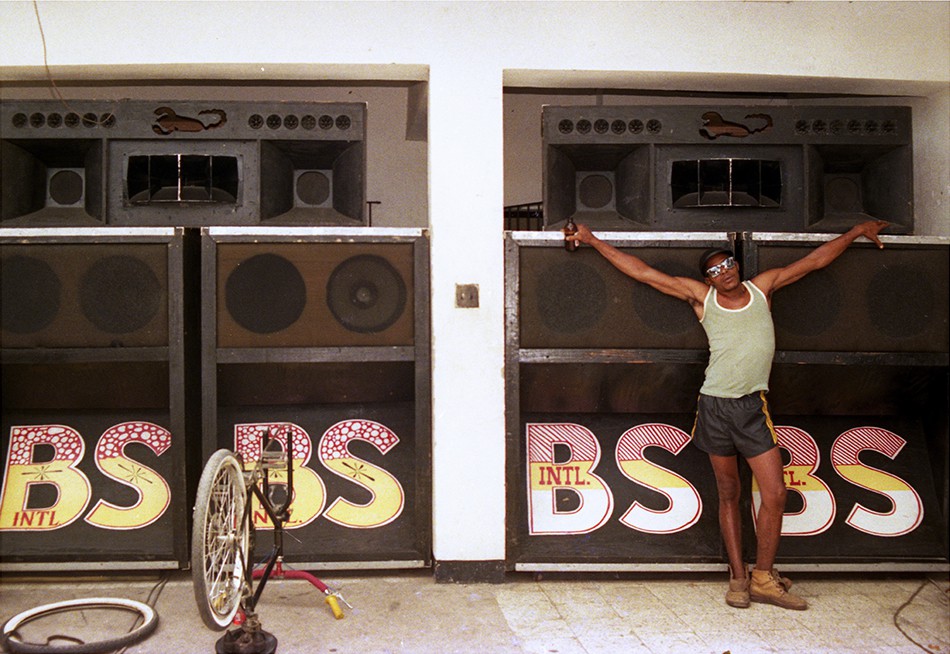April 2017

A daffodil display at the German National Garden Show, alongside which the first Documenta took place. Kassel, 1955.
Documenta 14
Athens, Greece
Opens April 8
Kassel, Germany
Opens June 10
You need two lenses to look at the world’s most important art exhibition: one focused on the long term and the other on the short term, one on history and one on economics. In 1955, Arnold Bode succeeded in mounting Germany’s first large-scale show of modern art since the Degenerate Art Exhibition of 1937 — and he did it not in Munich, the cultural heart of the Nazi regime, but in Kassel, a town leveled by the Allies in one of the most concerted bombing campaigns of the war. The first Documenta took place alongside a flower show, at which roses flourished out of heaps of rubble, and ever since the quinquennial mega-exhibition has served as a place for civic debate as much as aesthetic contemplation.
That’s the first story. The second is briefer: on August 14, 2015, the government of Alexis Tsipras bitterly adopted a counterproductive austerity budget imposed by the European Union, one even more brutal than the one Greek voters had rejected in a referendum weeks before. “They crucified him,” said one senior official who witnessed the showdown between Tsipras and Angela Merkel. Germany, hegemon of the eurozone, had trampled on the democratic voice of another country; Wolfgang Schäuble, the finance minister, was caricatured as a Nazi in the Greek press (no matter his disability). The Greek crisis has inculpated the very endurance of representative democracy, and the German art world, at least, knows who to blame.
So the unprecedented decision by curator Adam Szymczyk to deterritorialize Documenta — it will take place this year in Athens and Kassel, on equal terms — is not just a bitter retort to the bureaucrats of Berlin, Frankfurt, and Brussels. It is, in its way, a reboot of Bode’s conception of the first Documenta as a civic enterprise, rooted in international calamity and committed to a better future. Documenta has left town before: Okwui Enwezor’s 2002 edition was preceded by symposia in Lagos and New Delhi, while Carolyn Christov-Bakargiev held seminars in Kabul to prepare for her 2012 show. Szymczyk’s escape from Kassel, though, is of a whole other order. He and the bulk of his curatorial team have been working from the Greek capital since 2014, and many Easyjetting art lovers will surely go only to Athens this year, skipping off afterward to a nice little island instead of Germany’s 40th-largest city. We’ll hit both, but surely you’d prefer a weekend on Chios?
Szymczyk’s Solomonic division of this year’s show has made Kassel’s burghers none too happy, but Greeks have been lukewarm too. Yanis Varoufakis, the former finance minister, has accused Documenta of “crisis tourism,” and the newspaper Kathimerini has continually flayed his team, accused of bringing to town “the IKEA of art.” But if Bode was right, then Documenta needs Athens more than Athens needs Documenta — as a place to rediscover whether what we’re doing still matters. There is, infuriatingly, still no artist list, and yet we can plot Szymczyk’s route from recent issues of South as a State of Mind, which is serving as an ad hoc D14 publication and has featured the Greek artists Andreas Angelidakis and Christos Karakepelis, not to mention a beautiful essay on refugees from a certain Hannah Arendt. (South’s founder, Marina Fokidis, wrote a wrenching survey of the Greek art scene in Even No. 2.) This Documenta, for the first time, has a title: “Von Athen lernen.” Learning from Athens is the least we can do.

Alexandre da Cunha
Pivô, São Paulo
Opens April 1
The Brazilian artist takes household and industrial goods and redeploys them with devastating humor and irony. His readymades pair high and low — say, a period of political or cultural history as elucidated through brooms and mops. This new, site-specific commission appears alongside selected older works; as the artist has claimed, his imaginative use of form, when done well, achieves more than just “recycling.”
Nathan Beard
Art Gallery of Western Australia, Perth
Opens April 1
Born in 1987, Beard has a subtle eye but an acid tongue, and looks at the vicissitudes of Asian-Australian identity with easy shifts from high to low. This first museum show will include not only his tart videos — many feature his mother, doing it up as a Thai movie star — but also his alluring Swarovski-studded photographs, whose glittering surfaces belie historic pain.
Jamaica Jamaica!
Philharmonie de Paris
Opens April 4
Wisdom is betta than silver and gold. One of the most intriguing exhibitions of the spring takes place at Jean Nouvel’s tectonic new concert hall, which hosts a full-scale history of Jamaican music from reggae to dancehall. Expect films, costumes, and posters from the Wailers, Louise Bennett, and Lee “Scratch” Perry, plus a booming sound system.
Ian Cheng
MoMA PS1, New York
Opens March 9
Like a deist God, Cheng (whom we interviewed in Even no. 4) creates worlds and then leaves them to their own devices. His first stateside solo presents the complete animated simulations of his Emissary trilogy, starring a Shiba Inu on a quest with no fixed outcome. Using video game software to simulate narratives that evolve on an infinite timescale into inestimable iterations, no one, including Cheng, knows how and what will happen.

Between Land and Sea: Artists of the Coenties Slip
Menil Collection, Houston
Opens April 14
New York’s first artist lofts were not in SoHo but further south, in an alley of former sailmaking warehouses by South Street Seaport. Agnes Martin, Ellsworth Kelly, and Robert Indiana made their home there in the 1950s, quietly working while the Abstract Expressionists were being feted uptown. While the Coenties Slip group never formed a singular aesthetic movement, it's impossible not to notice their common influences — those shipbuilding artifacts, those prime views of the Brooklyn Bridge — and their influence on one another.
The Absent Museum
WIELS, Brussels
Opens April 20
For its tenth birthday, the contemporary art space in a former brewery turns to a strange matter: Brussels, fifty years after Marcel Broodthaers created his evasive Musée d'art moderne, still has no museum of contemporary art. WIELS itself is something other than a museum — it has no collection — and the 45 artists in this show, among them hometown favorites Ann Veronica Janssens and Michel François, reckon with how Europe's capital should conceive a thing. Could it be that the real institutional problem lies in continually asking questions? And is Pompidou Bruxelles, due in 2020, the answer to any of them?
Photographs Become Pictures: The Becher Class
Städel, Frankfurt
Opens April 27
What’s your pleasure: Candida Höfer’s icy perfection, Thomas Struth’s humanistic balance, Andreas Gursky’s megalomaniac abundance? The students of Bernd and Hilla Becher at the Kunstakademie Düsseldorf became the emblematic photographers of the 1990s and 2000s; this major history offers a chance to see who among them has aged well.
Louise Lawler
Museum of Modern Art, New York
Opens April 30
Lawler’s hard-thinking photography — she emerged as part of the Pictures generation, a New York crew keen on appropriation — is best when she delves into the thorny artistic matters of value and prestige. This long-awaited retrospective presents her images of collectors’ homes and auction houses, sometimes weirdly elongated, while MoMA’s sculpture garden will play her notorious Birdcalls, in which Lawler chirps the names of male colleagues like a demented crow.